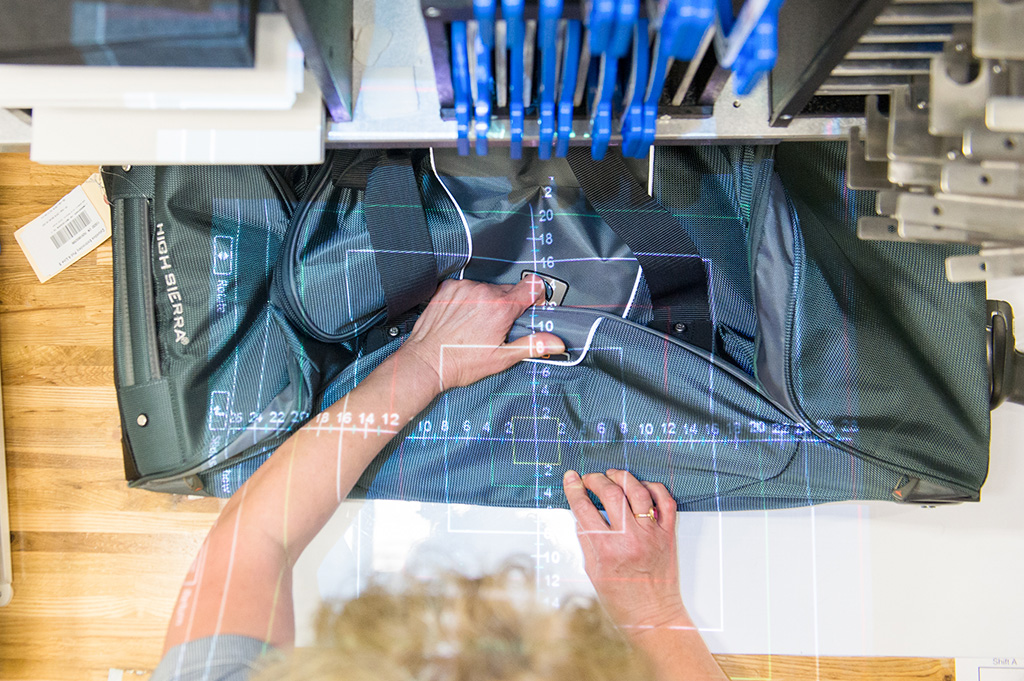
Mass customisation: Cimpress finds ‘the right balance’ of automation and human intervention in manufacturing
Cimpress was practising “mass customisation” years before the term became fashionable. In 1999, the Netherlands company took its operation to the internet and launched its now-famous Vistaprint brand, among others.
Originally established in 1995, Cimpress now employs 12,000 people worldwide and last year generated revenue of more $2 billion.
In this article, Maarten Wensveen, chief technology officer at Cimpress, provides an insight into the company’s operations and technology.
Modern manufacturing technology is improving how goods are made and how quickly they can be delivered to customers.
Mass customization is a newer manufacturing trend that plays a part in this advancement.
But technology is not alone in driving advanced manufacturing capabilities.
Humans still perform critical functions, particularly in a factory, and their unique contributions will always be necessary.
Mass customization allows for customized physical goods to be produced with the reliability, quality and affordability of traditional mass production regardless of quantity.
This makes it possible for individuals and businesses to create, decorate, personalize and design their own products in quantities as small as one.
Cimpress is a leader in this $100 billion and growing market, with more than 20 brands around the world that provide a range of products, including small and large format printed products – from business cards to signage, apparel, pens, backpacks and other items.
For Cimpress, delighting customers with products they love requires the right balance of automation and human intervention. Across Cimpress’ plants, manufacturing involves a mix of manual and automated processes to deliver the best end product.
Cost, safety, operational efficiency and customer satisfaction all are considered when deciding when and where to apply automation.

Common sense required
The reality is that humans bring much needed common sense, bigger picture analysis, and creativity to processes. This has a demonstrable impact on quality, time to ship, cost savings, safety and other factors.
In Cimpress’ Vistaprint plant in Ontario, Canada, for example, teams prepare and ship 60,000 orders on an average day. This number skyrockets to more than 100,000 during peak periods.
While automation plays key roles throughout the more than 560,000 sq ft plant (equivalent to nine football fields) and makes it possible to quickly scale to meet a surge in customer demand, the more than 1,000-team-member staff also play a critical role in the creation of the end product.
Embroidery machines used to customize hats, bags, clothing and more, for example, are heavily automated.
Throughout the plant, the software side of manufacturing processes is driven by our proprietary software suite.
Within the embroidery cell, the production planning software schedules jobs, grouping them together based on product type and similar thread colors, so there is less turnover required between jobs.
Once a job is set up, it requires no additional human intervention to complete.
Manual input is needed when switching from one job to the next. Tasks like hooping the product, setting the threads up on the machine, and affixing the hooped product to the machine are done by people.
While these might seem like needlessly manual steps in an otherwise highly automated process, because each embroidery design takes a different amount of time to complete, jobs are naturally staggered, and one individual can manage many machines at once.
Plus, humans are better at performing quality checks on products that would be expensive to redo.
Vistaprint also doesn’t automate in instances that would just create bottlenecks further down the line, such as binning, in which finished products are aggregated and prepared for shipment to the customer.
While Vistaprint has found ways to improve the efficiency of binning, it won’t ever be fully automated. Even with advanced production scheduling software, due to fluctuations in demand and differing production times by item, different products are ready at different times.
Binning allows products that are part of the same order to meet back up, providing an opportunity for a human to verify that the customer’s order is complete and accurate before shipping, reducing the need to ship in separate boxes.
Attempting to automate this step further would not solve, but ironically create, a potential pain point by creating bottlenecks further down the line in boxing and shipping station.
Single product orders, on the other hand, can be taken directly from product cell to logistics, or shipping.

The Autoboxer
Another highly automated process is the boxing of business cards.
This internally-developed machine, appropriately named the “Autoboxer”, is very effective and cost-efficient, working at twice the speed of a manual line.
It assembles each box, pairs it with an order, prints and applies a label, then closes and seals each box once filled.
The Autoboxer is built to expect errors and account for and correct the most common ones. This is a great example of automation providing the speed and scale Vistaprint requires to fulfill orders for more than 5 billion business cards a year.
At Cimpress, employees don’t worry about robots taking their jobs, but they do wonder how they can better work together with machines to get their jobs done in the safest, most efficient manner.
In fact, we often hear great suggestions from team members on how to further improve our mass customization process.
Cimpress is single-minded in its goal to produce high-quality custom marketing materials, promotional products, apparel and family keepsakes that help businesses grow and people celebrate special occasions.
Its dedicated team and the thoughtful use of automation are both essential to the company’s success.
(All pictures used in this article are of Vistaprint’s Windsor plant, and supplied by the company. Copyright reserved.)
Pictures
- Duffle bag image (main pic): Cimpress team member aligning duffle bag for custom embroidery.
- Large format print (mid-story): Cimpress team member oversees automated grommet placement for large format banners.
- Exterior shot: Cimpress’ 560,000 sq ft Vistaprint facility in Windsor, Ontario.
